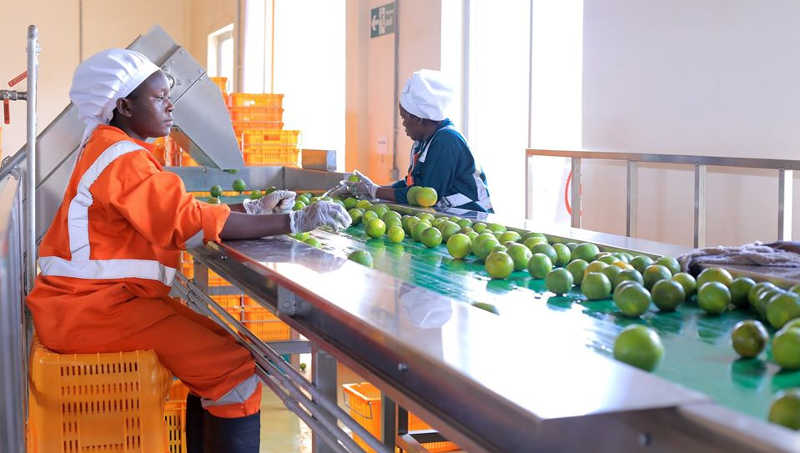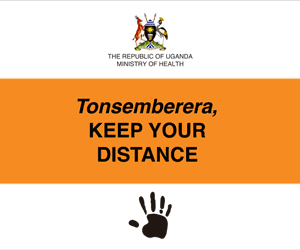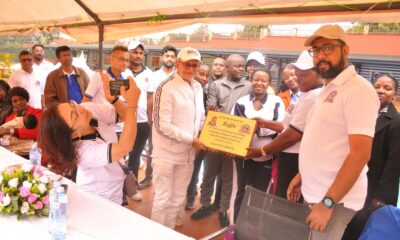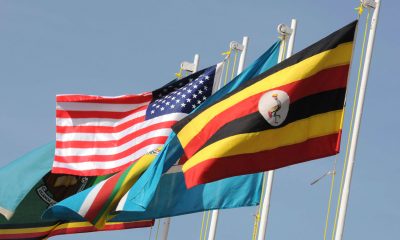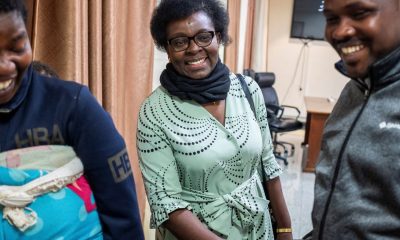Business
COVID-19 is an eye-opener into Uganda’s huge agricultural potential for industrialisation
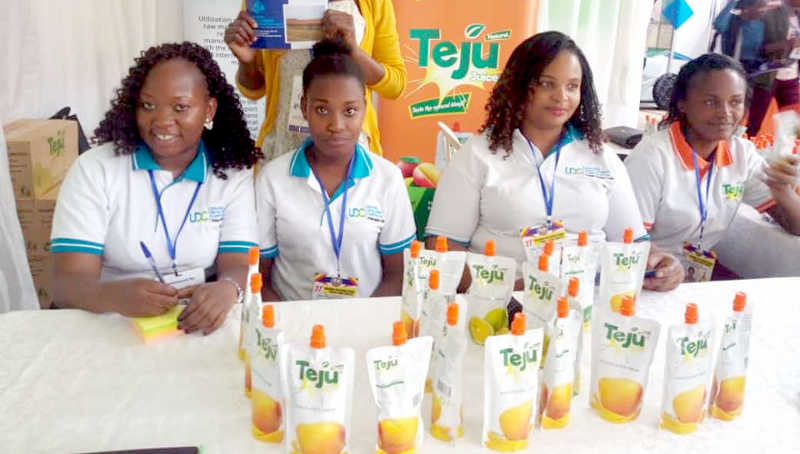
Teju juice, the trademark brand of the Soroti-based fruit industries ltd, that is supported by the Uganda Development Corporation should be one of the many products that UDC brings to the Ugandan market
His Excellency President Yoweri Museveni rightly remarked in his May 1, 2020 Labour Day speech that Uganda wastes a lot of her foreign exchange importing things that can be produced locally. He pointed out starch and sugar for pharmaceutical purposes, textiles and medicines as some of the products that Uganda can ably produce. And, they are highly-demanded in everyday life.
The president once again reiterated in his latest interview with NBSTV that the government intends to refocus its industrialization agenda to start producing many of the things locally. Many of us wish to believe that the president is sincere about this new commitment to drive economic development from within as opposed to looking at foreign investors/Foreign Direct Investments (FDIs) as the engine of Uganda’s development agenda.
The President’s repeated acknowledgement of the need to respect Uganda’s scientists and the knowledge they have generated, is an additional source of encouragement. Mentioning things such as starch, pharmaceuticals, industrial sugar, leather products and textiles among others, as potential import-substitutes his government intends to work on, is a comforting appreciation by the president of the basic link between agriculture and industrialization especially for a society like Uganda that is still in the initial stages of development.
This mindset, if passionately championed by the Head of State, can greatly transform our country by unlocking the huge untapped potential that exists especially between agriculture [natural resources] and industry. The advent of the deadly Coronavirus that has ravaged societies and destroyed economies across the globe, means that foreign money both from governments and individuals is most likely to decline, requiring poor countries to resort to their own resources, especially human ingenuity to rise from the doldrums.
The impact of the disease on international trade has further undermined a speedy recovery through international trade, tourism and sale of oil as prices of the black gold have plummeted to record lows. This is a resource we discovered recently, invested in a lot, especially by foreign oil firms, placed a lot of hopes in it, and borrowed hefty foreign loans with future oil revenues as guarantees. Is this still an economically viable route?
Uganda possesses the resources both physical and human as alternative routes to manage the above economic post-COVID and trigger the industrialization that we deserve. Agriculture–through the value-chains—is at the heart of this new realization, in the short, medium and long-term. This is how and why, I bet:

Uganda’s very first chocolate maker Pink Foods Ltd, with farms in Kyaggwe, complained recently that heavy taxes including on importation of machinery were weighing the company down
Using our already existing national institutions such as Uganda Industrial Research Institute (UIRI) under the Ministry of Science, Technology and Innovations (MoSTI) and the Uganda National Bureau of Standards (UNBS) and the Uganda Development Corporation (UDC) both under Ministry of Trade, Industry and Cooperatives (MoTIC), Uganda is best-placed to radically transform her economic landscape via Agro-industrialization.
Here is a list of sources of raw materials for the proposed agro-industrialization drive, socio-economic values, products/by-products as first things first—according to my simple theory:
Crop, poultry or livestock (as source of raw material[s]) and the primary product(s), secondary product(s) or by-product(s):–
Cassava: Human food, plant-starch, industrial motor-biofuels, plant-sugars, plant cellulose [nitro-cellulose and cellulose-acetate] glue/gum, paper, ethanol, beer, alcohol, soft-drink products, livestock & poultry feeds, plastics, films.
Maize: Carbohydrate for food; plant-protein, plant-oil, starch, livestock & poultry feeds, nitro-cellulose & cellulose-acetate, beer, plastics e.t.c.
Soya: Plant-protein, plant-oil, plant-cellulose, human food, edible-oil, ethanol, biofuels, livestock & poultry feeds.
Bananas: Food, plant fibres/pulp, rayon, (Vit. A, Zinc & Iron), animal & poultry feeds, production, plant-cellulose [nitro-cellulose and cellulose-acetate], textiles, starch ethanol/industrial alcohol, beer, biofortified foods, handicrafts;

Uganda made wall clock from Banana fibre
Cocoa & Coffee: Caffeine, plant essential-oil, beverages, industrial alcohol, blending-with-powdered-milk, coffee husks [pulp & mucilage], briquettes, tannin extraction, biodiesel/biogas, cocoa beverage, chocolate, skin-creams e.t.c.
Sugarcane: plant-glucose/glues/gums plant-cellulose [nitro-cellulose and cellulose-acetate], ethanol, industrial alcohol, sucrose, biofuels, fertilizers, livestock and poultry-feeds.
Sorghum: food, feed, fodder, grain-sorghum for nutraceuticals [for antioxidant phenolics & cholesterol-lowering wastes]; phytochemicals [phenolic acids, tannins, anthocyanins, phytosterols & policosanols [of great value in health industry]; plant-cellulose [nitro-cellulose and cellulose-acetate]. Fuel, starch, ethanol, beer, industrial alcohol, biofuels, bio-ethanols, livestock and poultry feeds
Livestock (cattle, goats, rabbits, sheep, pigs, poultry, turkeys e.t.c): Cow/goat Meat [blood, liver, lung, kidney, brains, spleen and tripe], animal-fat, animal-protein, hides & skins; eggs, chicken-meat; mutton, rabbit, pork and turkey meat, feathers, e.t.c, beef, bones, fat, edible-oil, leather [shoes, belts, bags e.t.c], medicinal & pharmaceutical use of by-products; biodiesel/biogas, dietectic products (chitosan), natural pigments [after extraction] and cosmetics [collagen],
Fish: Fish-protein, livestock and poultry feeds; fish-meat [for human & animal feeding, fish-protein concentrate]—fish as fresh, frozen, dried or canned], fish-leather, fish-oils derived from fish-meal, pearl essence, liver-oil, fish-maw, isinglass, fish albumin, glue, gelatin, peptones, amino acids, protamines, fish-skin,
High potential of herbal plants for Strategic industrial value: [tumeric, dandelion, rosemary, lavender e.t.c; herbal medicines and drug-development [pharmacopeial & non-pharmacopeial or synthetic drugs], values, food, plant-protein. medicines and drugs, essential plant-oils e.t.c;
Sources: Google search engine, scientific publications office, agritech.tnau.ac.in, NARO and author’s own experience & recollections e.t.c.
Some of the highly-demanded and most-traded commodities, goods and services in many parts of the world today, are the above-listed or their derivatives. They are consumed as foods, traded as primary raw materials for processing into finished products or by-products. If that’s the case, Uganda is best positioned to take full advantage of these vital resources as a basis for her industrialization agenda through development of their value chains. Because there-in are immense opportunities for income-generation, employment and taxes. For instance, a crop like cassava, has been proven to possess large amounts of starch for textile and pharmaceutical industries; ethanol derived from fermenting and distilling it; High Quality Cassava Flour (HQCF) for bakery industry.
Production of bakeries/confectioneries using HQCF as a supplement to wheat-flour [not readily available in large amounts in Uganda] should be done. For example, in West Africa, Nigeria adopted a national policy over 10 years ago, requiring bread and confectionery makers to ensure that cassava comprises at a minimum of 20% of the total ingredients. This meant saving big monies for the Nigerian cassava-farmers, traders, millers/processors, and the use and demand for cassava as a crop and as a tradable commodity rose up. Cassava became a major factor in the economy of Africa’s most populous nation and the continent’s largest economic powerhouse. This too can be done for Uganda’s cassava and the other crops I’ve listed above.
Cassava is also important in the production of beer i.e., Engule (crown) beer lager made by Uganda Breweries Ltd (UBL) on contract from Buganda Kingdom. In addition, plant sugars [glucose] can be extracted from cassava for use in production of soft-drinks (sodas).
To undertake all these ventures, Government should revisit the Plan for Modernization of Agriculture (PMA) but renamed: Plan for Modernity via Agro-Industrialization (PMA”I”). Under a revived PMA”I” [as a special purpose vehicle (SPV) integrated within UDC, government policy[ies] should be formulated in favour of the promotion of the crops, poultry and livestock I’ve named above, to place them as national priority sources of strategic products/by-products and youth employment.
Such critical activities as breeding, multiplication of foundation improved seed/seedlings/plantlets [via deliberate breeding for higher productivity per unit area by NARO: field-performance, resistance to pests and diseases, and resilience to destructive environmental conditions/factors like climate change, i.e., drought impacts and soil-salinity, flooding e.t.c], evaluated and approved by MAAIF, be prioritized for instance. Quality assurance should be by UNBS, National Drug Authority (NDA)/Ministry of Health for public health, safety, consumers’ trust and business/trade confidence e.t.c.
Another example of a crop with huge economic benefits that Uganda should prioritize for agro-industrialization [but whose immense potential has never been stated/known much], is soya beans. This legume is a high-protein and edible-oil crop. Soya is a nitrogen-fixer in the soil and is a human food (as a vegetable and edible as roasted [nuts/beans]) and is baked into bread, scones, biscuits, cakes e.t.c). Soya-flour is blended to fortify/enrich other crops/foods lesser in protein e.g., rice, sorghum, millet, maize, cassava, e.t.c. Being high in protein and vegetable oil, soya should be massively promoted under the UPE [Universal Primary Education] and USE [Universal Secondary Education] programs of the government, as a UPE learners must-eat-at school in form of roasted beans, bread/scones and porridge from fortified flours (rice, sorghum, millet, maize, cassava, e.t.c.), ostensibly to promote nutrition [fight malnutrition] among the young Ugandans.
For the success of the revolutionary mission I’m putting forward, Government should drop the long-held escapist argument that it doesn’t engage in business, to set up large-scale state-farms and organize smallholder co-ops under UDC broadly and specifically via PMA”I” to grow cassava, banana, soya, sorghum, sugarcane and coffee plantations and similarly, large-scale state-farms and organized smallholder co-ops for livestock and poultry.
These should be promoted under PMAI. It is not only for human consumption that the listed crops and animals should be prioritized, but as primary sources of feeds for the poultry and livestock.
Latest data from the State-run Uganda Bureau of Statistics (UBOS) indicates that Uganda’s feed imports have tripled from US$ 6 million to US$17.7m between 2016/17 and 2017/18 financial years. These statistics and all the benefits accruing from them can only and only please countries from where Uganda imports the animal and poultry feeds. Shouldn’t be pleasing to the Ugandan State or society, because Uganda does possess naturally-occurring and farmer-produced animal and poultry feeds. From snail shells littering the shores of most of our lakes [they also liter my banana garden and compound], and the plenty of silver-fish (mukeene) in the lakes, plus the huge amounts of cereals, oil-seeds, tubers and pulses produced by farmers annually, Uganda shouldn’t be importing animal and poultry feeds.
Ugandan farmers annually and seasonally produce maize, rice, millet, simsim (sesame), sorghum, soya-beans, groundnuts, cotton, cassava, human-induced/raised maggots, snails, cattle-blood collected daily in abattoirs and ponded-fishes are all potential and proven sources of animal and poultry feed, many of them possessing rich and rare vital nutrients (proteins, magnesium, zinc, iron and vitamins e.t.c).
Policy front
Our nation needs an urgent revisit of her national policy and programmatic areas: for example a shift away from the 20-year full economic liberalization [private sector-led] to State-led economy and whose thrust for agro-industrialization should be driven by UDC and its SPV [the reviewed/restructured PMA”I”]. Government should fully integrate the MIOGA programme with these policy steps above. Key area of attention should be restoration of a UDC but from the 1960s’ design and structure, to a 21st century state, which should be run via a clear charter, directly binding it with the Ministries of Agriculture, Animal Industry and Fisheries (MAAIF), Trade, Industry and Cooperatives (MoTIC), Science, Technology and Innovations (MoSTI), Health (MoH), Water and Environment (MoWE), Energy and Mineral Development (MoEMD) and Finance, Planning and Economic Development (MoFPED)—plus all their departments and agencies.
Then Uganda Development Bank (UDB) too should be linked to UDC to provide the requisite funding to its priority programmes, key among them the PMA”I”.
Leadership
One person I recommend to ably lead such a process of PMAI [redesign/restructuring/implementation for agro-industrialization of Uganda post-COVID19], is former Agriculture Minister, Victoria Ssekitoleko. She has the necessary influential policy and public engagement capacities, deep passion, energy and huge experience in previous international, regional and national agricultural planning and development work at FAO and in MAAIF (which she headed as Minister and Political/Policy head); she has the technical expertise in agro-economics and connection/network in the private sector [local and international spaces], in the donor community and supervision of high-level technical processes.
Modern agriculture, which requires improved seeds, organized farmers around crop value-chain cooperatives, irrigation-for-sustained agro-production against droughts, with science/technology-backstopping as sure ways to an integrated agro-industrialization.
Therefore, the already mentioned staple crops/cash, poultry and livestock should be prioritized for large-scale mechanized state farm-production and clustered/organized smallholder farming for their products and by-products, i.e.: food, plant protein, starch, ethanol, beer, textiles, leathers and industrial alcohol [for production of the likes of sanitizers that should from now on become mandatory in homes, hotels, schools, offices, public places like taxis/buses]. Other useful and widely-used products derived from the priority industrial-crops, poultry, fish and animals, are: biofuels, edible-oils, fortified foods, milk, beef, beverages, animal and poultry feeds, manure/fertilizers, among others. Critical crop and animal sub-sector growth and development for local agro-industrialization needs and for economic export-value, should be considered prior to end of COVID-19.
Exploit abundant capital
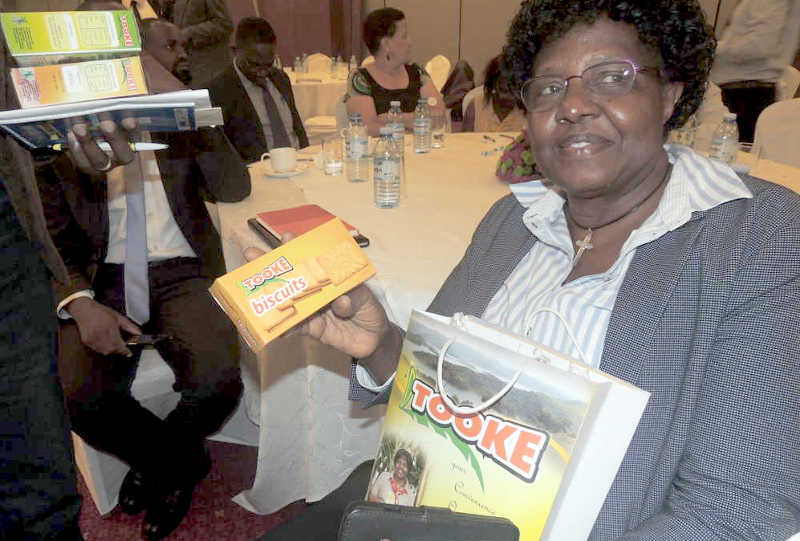
Uganda needs to have more initiatives such as the Presidential Initiative for Banana Industrialisation led by Prof. Rev. Muranga, to add value to our agricultural output
Our scientists and researchers can also study the huge vegetation-biodiversity to profile the plenty of wild-fruits, leaves, tree-barks and roots that can constitute rich sources of supplementary animal and poultry feeds, to add to the already known/existing sources. Therefore, the Government should not look on as the nation spends such colossal sums of hard-earned foreign currency–perpetually in short supply—on the importation of animal and poultry feeds. If this category of imports is classified among non-taxables, then the Government doesn’t earn import-tax [revenue] from them.
Government then has the onus to promote locally-produced animal and poultry feeds at primary (on-farm) and tertiary (industrial processing and value-addition), in order to levy taxes on revenues or incomes these animal and poultry feeds’ industries would earn or attract as businesses, such as excise duties, VAT collected from consumers e.t.c.
Even the multitudes of civil society organizations (CSOs) involved in policy advocacy in the agricultural sector especially those specific farmer-organizations working for the interests of farmers, should not allow the status quo of importation of animal and poultry feeds to persist. It is shameful that the over US$17m spent on feeds’ importation is not earned by our farmers, fisher folk and local processors/producers of animal/poultry feeds.
Now, with regard to our agro-industrial theme and drive, crops like bananas have been proven to possess thread in their fiber, thanks to UIRI research.
With a literally collapsed cotton industry on our hands [except for some few industrialists producing textiles using cotton—I don’t know if its Ugandan cotton or not], but as a national strategic move, government should establish UDC-textile industries in the major-banana producing regions (western, central and eastern Uganda) as the banana-stem is very bulky to transport in terms of good volumes over long distances. Again, using the UPE and USE policies/programmes, Uganda should cease to dress her school-going learners in polythene material uniforms especially those in what are regarded as “UPE schools”. Polythene are nylon/plastic-like materials—a by-product from crude oil.
It is unfriendly and unhealthy to the human body, as it produces a lot of heat—making the body uncomfortable. There’s also a yet an untested theory that those uniform materials worn by children attract lightening during rainy [wet] seasons, hence the numerous lightning-strikes of schools. Have you ever brushed a plastic comb over the polythene/nylon materials/clothes, sparks are produced. The same happens when a plastic comb is passed through the hair, and at night those sparks give off light. This is generation of electricity [the same is true of lightening—its electric power between negative and positive charges—at fusing, the charges spark off or react.
So why should we continue to lose young lives, when our researchers in UIRI at Nakawa have experimented with banana-fibers, and confirmed textiles can be made out of them. Now, UPE and USE with about [not very sure] 10 million pupils/students [combined] should be ring-fenced for uniforms from our state-owned UDC banana-textile industries. If Government makes annual budgetary allocations for purchase of uniforms or if it’s the parents that buy uniforms for their school-going children, then that money should strictly buy uniforms from the new UDC-owned textile companies’ outlets that should be established in all the cities/towns across the country.
What is critical is that the UDC-banana textile company “Y” shall directly buy stems from farmers then ferry them for processing [weaving threads from the stem fibres] at their factories. Alternatively, UDC with UIRI’s expertise should encourage community-based cottage industries that do primary processing of the banana stems for the thread before the textile company buys the primary-processed thread for secondary processing (weaving) and further steps into all sorts of fabrics/colors/designs/fashions, but majorly UPE and USE school uniforms. Banana farmers shall cease to grow and harvest bananas for bunches [food] only, but also get an additional income source [selling stems].
Then young people should be regionally trained by UIRI and employed by UDC, to make banana threads from stems on looms powered by rural electricity extended by the Rural Electrification Agency (REA) in the Energy Ministry. But under UDC and the Energy Ministry, we should also have geo-thermal power produced from hotsprings in the Albertine Graben [the western rift valley – Ntoroko, Kabarole, Bundibugyo, Bushenyi, Buliisa, Kasese, Kyenjojo and other districts].
This power should be used to run the youth-managed banana looms for textile-thread and the regionally-located textile industries. The Geo-Thermal Power (GTP) should be produced by a UDC-managed firm from which Uganda Electricity Transmission Company Limited (UETCL) should buy power that REA in turn shall extend to the rural textile cottage industries and to others [cassava, sorghum, maize and millet-flour mills and value-addition youth enterprises] and also to UDC’s regional banana textile factories plus associated industries and women-run small and medium-scale enterprises (SMEs).
UDC’s GTP should also power rural dairy and leather plants that shall process milk and hides/skins into a range of products, respectively. For milk, the following shall be outcomes of value-addition processes/enterprise: improved soil-fertility from the dairy animals’ dung and cow-urine [outputs from animals and inputs in the crops-farming as organic manure]; there will be increased crops’-productivity due to deliberate organic fertilization of crops; establishment of cottage-dairy processing factories for cheese, ghee, yoghurt, butter, e.t.c; milk cooling plants and processing units for coffee-milk integrated [ready-2-drink satchet], animal feeds-growing and processing under established Dairy Subsidiary firms set up; employment of youth and women in newly-established Dairy Subsidiary firms.
Additionally, there shall be branding, promotion/advertising, sales/distribution, marketing businesses from the above processes and products e.t.c [previously non-existent in Uganda’s economy]. New products from coffee-dairy on the market increasing choices to consumers, like the instant milk-coffee-sugar & non-sugar ready-2-drink satchets, shall emerge;
Wide-range of positive outcomes
Outcomes from the new crop and animal-based agro-industrialization of Uganda, all assure the nation of sustained agricultural production and supply for socio-economic prosperity. A wide-range of positive impacts shall include new tax revenues to the District Local Govts and to the central Govt via taxation of the various businesses listed above. Uganda shall also realize trained/skilled manpower [youth & women] by UDC, UIRI, SKILLING-UGANDA, in the technical running of the factories.
And the businesses that will have emerged, shall no doubt, require finance, accounts/audit, administration, transport, procurement, technician and scientists [in labs and factory inspection/oversight of scientific processes] and IT-skilled manpower, maintenance and cleaners, cooks, medical staff, security, drivers e.t.c. This means new jobs that did not exist prior to the non-traditional approach I’ve proposed in this document.
In addition, new knowledge shall be generated and documented as a Ugandan-designed approach to utilizing and positioning agriculture as a powerful and strategic sector, which many bureaucrats and technocrats currently ignore or present [agriculture] as a lesser-valuable sector. But most importantly, there shall be research studies on possible addition or expansion of this approach for the African and developing world’s adoption [or scale-up and replication/roll out beyond the research/piloting stages].
Comments



